 Taliban and lessons from Pakistan Extremism Schools Against Hazaras in Afghanistan
Taliban and lessons from Pakistan Extremism Schools Against Hazaras in Afghanistan
The rise of the Taliban group in Afghanistan has changed many national, international, regional, and even domestic equations in this country. Some inside and outside of Afghanistan equate the rise of the Taliban with the surge of Pashtun tribes in the language of other ethnic groups in Afghanistan. Since ethnic and religious relations are the most important criterion of Taliban policies in Afghanistan, this reading and analysis are not so unreasonable and illogical on the Taliban group. The Taliban were a group of homeless youth sent to Pakistan in the 90s due to fighting between Mujahideen forces in Kabul and other Afghanistan cities. And they had gone for training and education in extremist schools in northern Pakistan, and then they found an extremism views against other religious and ethnic groups of Afghanistan.
Nearly three decades later, during the civil war in Afghanistan and the ominous five-year shadow of the Taliban regime, this extremist group’s teachings have not changed. They have become harsher and more brutal than before with the humans, especially with Afghanistan’s people. The lessons taught in Taliban schools are the same lessons learned in Pakistani religious schools. Therefore, the only way the Taliban have taken power and maintained power against other ethnic groups in Afghanistan has changed. But the group’s monopoly, anti-Hazara, and anti-Shiite or (Shia) tendencies do not seem to have changed much. This article aims to address the Hazaras’ issue in Afghanistan and their relationship with Pashtun tribes since the formation of the modern Afghan government or the Republic government until now. The Taliban’s positions in this regard, especially towards the Hazaras.
Rainbow of Ethnicity and Government in Afghanistan
From the 19th century onwards, the issue of ethnicity seemed to become less important in the world, but once after World War II and again after the Cold War, ethnicity became a tense issue within governments and nations around the world. In both periods, the weakening of governments, the involvement of foreign actors, and the rise of local ethnic currents made ethnocentrism more pronounced than usual. Unfortunately, let us not forget that in Afghanistan, the issue of ethnicity has never been resolved and is still standing. I hope that this issue will be resolved in the near future to live together as a national and united people and have peace and work more and more for the welfare of dear Afghanistan.
In this land, the issue of Pashtun exclusivism is also a problem in the contemporary history of Afghanistan. The National Government of Afghanistan was established in 1747 under the rule of a man named Ahmad Shah. From fifteen centuries before that until the time of Ahmad Shah, this country was known as Khorasan. The first document to show the name of Afghanistan in this region dates back to 1801 When Iran and Britain agreed on the sovereignty of the region. But the name was controversial from the start; Because the name of one of the tribes of Afghanistan, namely Afghan or (Pashtun), was given to the whole country, which cannot be seen as fair and just.
The multiplicity of Ethnicities and Linguistic Inequalities in Afghanistan
Although Afghanistan has been a state for more than 200 years, it is still the land of a diverse people that have not yet become a firm, even semi-prosperous and semi-modern land. The four ethnic groups of Pashtuns, Tajiks, Uzbeks, and Hazaras make up the other ethnic groups of the Afghanistan rainbow community. But these rainbows never shone together and did not rise, the causes of which are apparent to the world’s people. In addition, Turkmen, Aimaqs, Baluchis, Pashayais, Nuristanis, Ghezelbash, Sikhs, Hindus, Brahawis, and Pamirs are also residents of Afghanistan. Ethnicities speak a variety of indigenous languages, and for the past twenty years, Afghanistan’s constitution, “All Forms of Discrimination, Violence, and Privileges Between Afghan Nationals Were Prohibited.” Article 16 of the Afghanistan constitution declared Pashto and Dari the country’s official languages.
It specified that in ethnic areas, since the majority of the population was from that region, the language of that population was considered the third official language. But in practice, especially in recent years, the government has violated these principles and, in favor of the Pashto language, has not given linguistic and equal importance to other languages in Afghanistan. Therefore, this antagonism (Anti-linguistics) increased during the time of Ashraf Ghani Ahmadzai, the fugitive President of Afghanistan, who even replaced the Pashto language with the language of administrative correspondence in most Afghanistan government departments. But nowadays, this antagonism, especially the eradication of Dari-Persian, has become hotter and hotter by the Taliban in Afghanistan.
Ethnic and Religious Differences in Afghanistan
Ethnic differences are also associated with religious differences. The Hazaras are the largest Shia ethnic, and the majority of them are Shiite, followed it the Ghezelbash, the Sadats and the Heratis, some Baluchis and Tajiks, and even a minority of Pashtuns are Shia in Afghanistan. Afghan governments have for decades been dominated by Pashtun commanders and kings who were unwilling to share power with other ethnic groups in Afghanistan. They especially defined themselves in contrast to the Hazaras. The Pashtun monopoly has progressed to the point that even in the government of the Islamic Republic of Afghanistan, in recent years, the Pashtuns have seized power in most sensitive areas, especially the military posts and bases. Taliban took control of Afghanistan in 2021, and protests are happening against the Taliban in European countries and even inside Afghanistan. Therefore, Western Pashtuns and Taliban supporters also demonstrate their discrimination against the Hazaras in the same protests by trying to remove other ethnic groups from the political, social, economic, and educational arenas and lobbying for the Taliban day and night. These days, turbaned Taliban can be found in Afghanistan, and tie-wearing Taliban can be found outside Afghanistan, such as in Asian, Arab, European, and Western countries.
The Abd al-Rahman Khan’s Tyranny Against Hazaras in Afghanistan
From 1880-to 1901, the Hazaras were integrated into Afghanistan society after three years of resistance and war against the tyranny of Amir Abd al-Rahman Khan. Abd al-Rahman violated the law of protection against the Hazara Shiites, calling them infidels and ordering a fight against them in Afghanistan. But the Hazaras also lost the battle and were forced to raise taxes by the oppressive regime of Abd-l Rahman Khan. Hatred increased between the Pashtuns, who at the time were dominated by military commanders, and the Hazaras, who had to be obedient. Finally, it reached its peak in 1892. This year, the Hazaras united against the Pashtun garrisons, bases, and military commanders in Afghanistan.
Amir Abdul Rahman Khan mobilized 150,000 Pashtun soldiers to counter the Hazara insurgency, using these tribal soldiers to massacre 60 percent of the Hazara people in Afghanistan. This Abdul Rahman Khan’s act was a blatant genocide against the Hazaras in Afghanistan that has continued to this day. But only the approaches to this genocide against Hazaras and Hazarajat have changed. The plan is the same as the previous plan. However, The Hazara population, which until then made up half of Afghanistan’s population, was reduced from the country’s second-largest ethnic to the third largest ethnic group in Afghanistan by killing and forcing them to leave their homeland. The next move of Amir Abdul Rahman Khan was the migration of Hazaras to different parts of the country, which also led to an over-reduction of this ethnic group’s power in Afghanistan.
Excommunication and Insult of the Hazaras During the Reign of Abd-la Rahman Khan
From that time, the weakening of the Hazaras intensified through the appointment of non-Hazara commanders in Hazarajat areas and at military bases, the collection of exorbitant taxes, and increased their excommunication against Hazaras. Discrimination against the Hazaras continued for a century. The Hazaras, who resemble the people of Central Asia in appearance, persecuted them racistly. “Since the Hazaras were Shiites, it was easier for the rulers to ask the Sunni scholars to excommunicate them,” writes Ka Kar, a Pashtun writer, about the process of alienating the Hazaras in Afghanistan. For the first time, a man named “Khan” was the mullah of Kabul city who declared a religious war against the Hazaras in Afghanistan and ignited it. There are many reasons why Hazara phobia peaked at that time. Among other things, the Hazaras refused to pay the taxes imposed on the authoritarian government of Abd-la Rahman. But others believe that Hazara phobia was a tool for Pashtun leaders to unite different Pashtun tribes and factions in Afghanistan against other ethnic groups.
Who are the Hazaras in Afghanistan?
One of the Persian-Dari ethnic groups in Afghanistan is the Hazaras, with the Persian dialect of Hazaragi, scattered in all parts of Afghanistan, and most of them live in Daykundi, Bamyan Ghazni, and other provinces of Afghanistan. But their main places of residence are in the central highlands of Afghanistan, called Hazarajat; most of them are Shiites. But Sunni Hazaras live in provinces such as Baghlan, Badghis, Ghor, Kunduz, Faryab, Jawzjan, Panjshir, Badakhshan, and Parwan, and there are some Sunni and Ismaili Hazaras in Bamyan and Shabir district as well. As mentioned, the majority and not all of the Hazara people are “Twelver Imams.” According to one tradition, the Hazaras became Shia during the reign of Shah Abbas Safavid; But another view has been put forward by HF Schroman, who believes that Shiism was introduced to the Hazaras from India.
Hazaras are the third largest ethnic group in Afghanistan, and estimates indicate that between six and seven million Hazaras, or 20 to 30 percent of the population, live in Afghanistan. Most Hazaras are Shiites and are considered a religious minority in Afghanistan society. Nevertheless, there have always been biased domestic groups that concealed the actual Hazara population in Afghanistan from the national and international media and fed false and untrue statistics to national and international newspapers and media in the world. In itself is clear discrimination against the Hazaras in Afghanistan.
Even though this discrimination has been accepted by the global media, which claims to provide accurate and impartial information about human rights, this false, unrealistic, and unprofessional statistic is shamelessly republished every day, which is unfortunate. The media, which claims to provide accurate information, states that the Hazara population is 9 to 15 percent based on unrealistic and false statistics given to them by the enemies of the Hazaras and humanity from inside Afghanistan. It is nothing more than a lie. Although official and accurate population statistics in Afghanistan have not been released, estimates indicate that the Hazara population is above 15 percent in Afghanistan. Therefore, we hope that the national and international media will be honest and impartial in reporting on this issue.
Endnotes:
https://www.hrw.org/news/2021/10/22/afghanistan-taliban-forcibly-evict-minority-shia
Is the Presence of ISIS in Afghanistan an Objective Fact or a Western Propaganda?
https://www.ndtv.com/world-news/over-800-hazara-families-ordered-out-of-their-homes-by-taliban-2552452
https://www.trtworld.com/magazine/why-are-hazaras-being-evicted-from-their-homes-in-afghanistan-s-daikundi-50324
https://www.bbc.com/news/world-asia-58277463


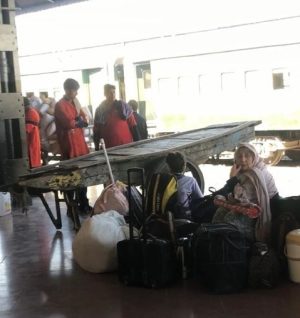
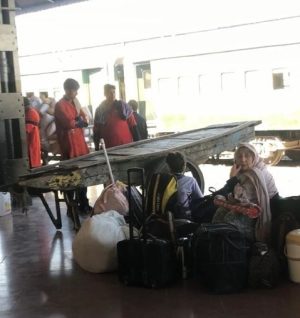


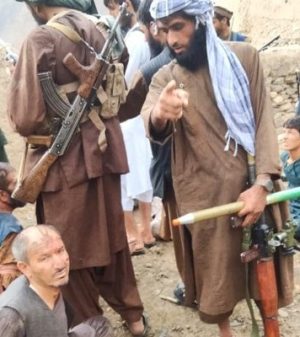
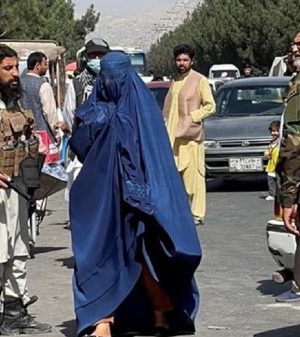
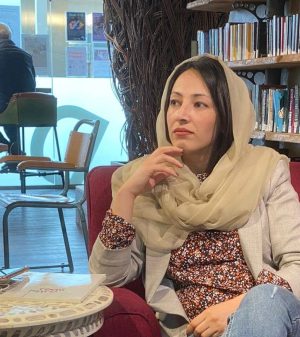
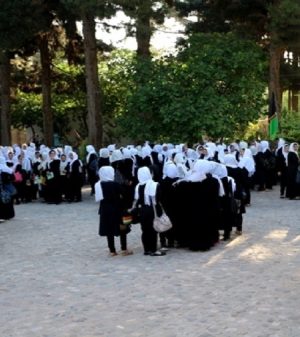
Add Comment